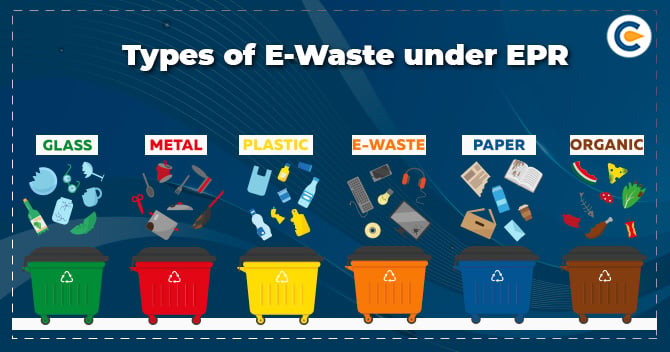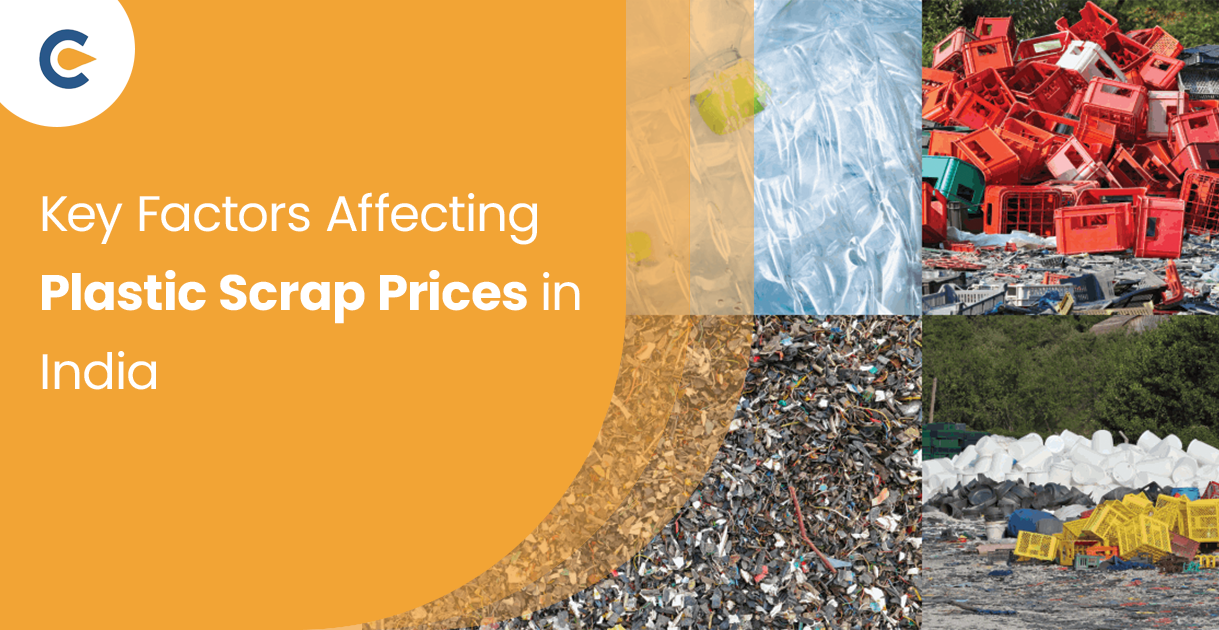We are in the technological age, and the constant need for the most recent and high-tech product is, unfortunately, contributing to a mass amount of e-waste. Also, Dumping e-waste can result in hazardous emissions to the air, water, and soil and create severe health and environmental hazards. This write-up seeks to discuss types of E-waste under EPR in detail.
Before discussing the types of E-waste under EPR, let’s begin with what is E-Waste?
What is E-Waste?
E-waste stands for electronic waste that includes various forms of electrical and electronic equipment that are old, discontinue to be of any value to their owners, or you can say the equipments are at the end of their useful lives.
Electronic waste has become a global issue, mainly due to its increasing quantity and toxicity. That is why the improper disposal of electronic waste creates a great danger to human health and the environment.
The formal-sector producers had to suffer the extra environmental, health and safety, and compliance costs as per the recent reports.
What is EPR?
EPR stands for Extended Producer Responsibility. In 2011, the government passed the first law based on EPR that makes manufacturers liable for handling the final stage of the life of its product in an eco-friendly way and certifying environmentally[1] sound management EPR certificate or license is mandatory for every producer producing electric or electrical equipment.
The CPCB issues EPR Authorization under MoEFCC, Government of India. As per the guidelines, producers need to associate with the authorized recycler to dispose of the E-Waste and submit all the plans based on estimated dump quantity and methodology approved for dumping in CPCB to get the EPR Certificate. Now, let move to the next section that talks about the type of e-waste in detail.
Types of E-waste category under EPR
E-waste is the electronics that are predetermined for reuse, resale, recovery, recycling, or disposal whether working or repairable electronics) majorly policy advocates apply the term E-waste and E-scrap to all surplus electronics.
Majorly, there are two types of E-waste under EPR
- Information Technology and Telecommunication equipment
- Consumer Electrical and Electronics
But are subdivided into various categories-
- Temperature change equipment
- Large Equipment
- Small Equipment
- Lightening Equipment
Note: The equipment and devices in each category vary in Durability profile, impact, and collection methods, among other differences.
First, let’s talk about-
1. Information Technology and Telecommunication Equipment-This category includes things such as-
- Centralized Data Processing: Various types of Computers, Laptop, Notebook Computers and accessories, Notepad
- Printers including components
- Telex, Telephones like- Pay Telephones, Cordless Telephones and Cellular Telephones
- Copying Equipment
- Electrical and Electronic Typewriters
- User Terminals and Systems
- Facsimile
- Mobile phones
- Scanners
2. Consumer Electrical and Electronics-
Types of equipment that fall under this category are equipment for grinding, milling, turning, splitting, drilling, cutting, folding, bending, punching, or processing metal, wood, or other materials. Also, the equipment in this category is used as tools for gardening activities such as mowing. Few of the consumers Electrical and Electronics are
- LCD and LED Television Sets
- Refrigerator
- Washing Machine
- Air-Conditioners excluding Centralized Air Conditioning Plants
If we talk about the subcategory, the first in the list is
1. Temperature change equipment-This category is also termed medical equipment, which includes-
- Radiotherapy equipment,
- Laboratory equipment for in-vitro diagnosis,
- Freezers,
- Pulmonary ventilators,
- Cardiology equipment,
- Stethoscopes and
- Electronic equipment for identifying, preventing, treating, monitoring, reducing injury, illness, and disability.
2. Long-term equipment: Long term equipment are majorly used in household work, including freezers, refrigerators, dishwashers, cookers, washing machines, air conditioner appliances, microwaves, electric radiators, electric heating appliances, and large appliances for heat chambers, beds and armchair furniture, electric fans and electric heater.
3. Small Household equipment: Apart from long-term household equipment, some home appliances are smaller but still consist of e-waste. Few Small Household Appliances are carpet sweepers, vacuum cleaners, electric knives, toasters, water dispensers, fryers, appliances for hair drying, haircutting, massage and shaving and appliances used for sewing, weaving, and knitting.
4. Toys, leisure, and sports equipment
As we all know, kids are not interested in stuffed toys and games. They are totally in love with hand-held video games, video game consoles, car racing sets, electric trains, computers for biking, running, rowing, diving, and sports equipment with electric or electronic components. This equipment, after a particular use, becomes an Electronic waste.
All these E-waste categories and their equipment pose one of the most significant environmental challenges globally. Mostly, developing countries are hard hit by the vigorous surplus of global e-waste generation. Not only this but also Low initial costs, high advancements in technology and high rates of obsolescence continue to increase the amount of e-waste generated annually. This has resulted in various challenges that call for Strict action.
Recycling of E-Waste equipment
The industry of recycling is a bit perplexing. There are large shredder operators and smaller specialist recyclers. However, they are backed up by other companies, which provide services like plastics recycling and refining precious metals. Recycling companies also collect items for export to those countries with more advanced recycling systems and extract components and materials for recycling.
Consequences of Improper electronic Waste Disposal
The social, fiscal, and environmental consequences resulting from the careless handling, Dumping and management of e-waste include:
- Air pollution
- Toxicity of radioactive nature of e-waste to water, soil, humans as well as animals
- Increased expenditure on healthcare to a great extent
- Bad health
- Fewer opportunities for employment in recycling industries
- Heavy investment in high-priced and complex environmental remediation technologies
Conclusion
In short, any electronic appliance can cause damage to individual health and the environment if not disposed of responsibly. The casual processing of electronic waste in developing nations may cause severe health and pollution problems, though these nations are in all probability to reuse and repair electronics. Despite the fact these dangerous substances are present in small amounts, they have a great possibility of causing severe environmental damage. Well, that about the types of e-waste, write to us if you would like to add something important about the same.
Read our Article:Obligations for E-waste Recyclers and Dismantlers under E-waste management rules











